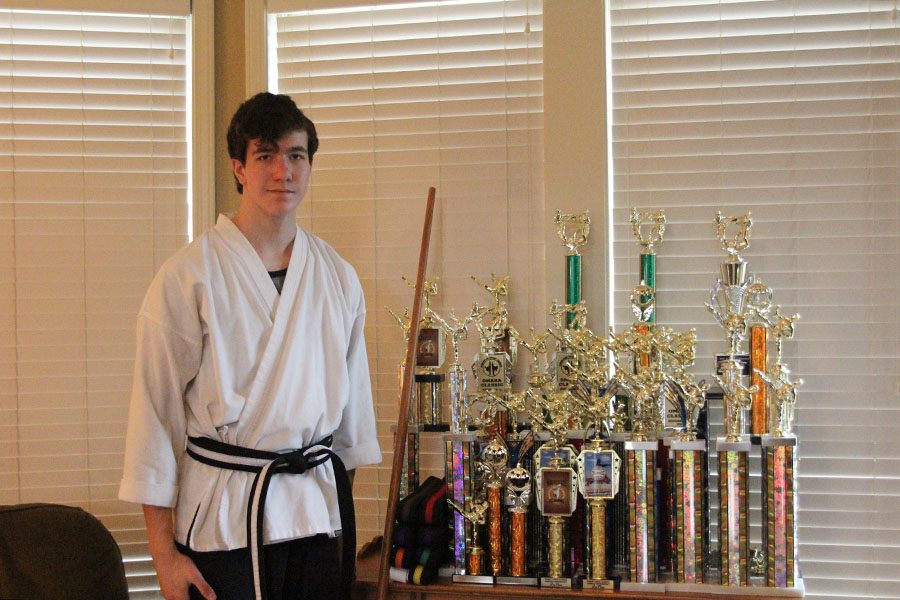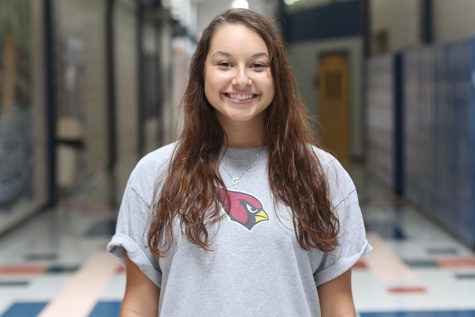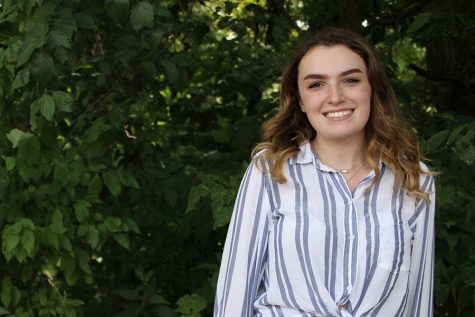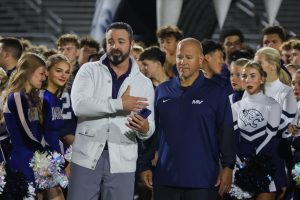Sophomore Justin Deas trains as a first-degree black belt
For five years, Deas has trained to become a black belt
By Abby Doughty
Wearing his black belt, sophomore Justin Deas stands next to trophies that he has won at numerous competitions.
January 29, 2018
Set in a fighting stance dressed in a white robe called a Gi, sophomore Justin Deas prepares to take out his opponent in sparring and perform in his weapons division at his meet in mid-October.
Taking after his family, Deas joined the American Sport Karate Center in sixth grade and is now a first degree black belt.
“I started with no particular reason,” Deas said. “It was mainly to stay in shape and follow after my dad and brother who’ve had cool experiences with the martial art.”
There are multiple divisions and techniques in karate, which include sparring, form and weapons.
“The hardest skill I’ve learned is my reaction time, which plays a big role in martial arts when you’re sparring,” Deas said.
To prepare for a meet, Deas and friend Amanda McGarry practice five days a week for about 30 minutes to two hours each day.
“[Deas] takes his training very seriously,” McGarry said. “I’m also a first degree black belt and I always see him work both before and after class and outside of the dojo.”
As a competitive karateka, each competition is separated from the last and rankings are based on overall performance.
“Competitions are nerve-racking,” Deas said. “If you lose one round, you’re out the rest of the competition. Even when you’re exhausted, you have to keep going.”
According to McGarry, as a first degree black belt, Deas works on the two most important aspects of being a black belt: respect and self-discipline.
“Just like any other martial art, karate isn’t just a sport but a lifestyle,” McGarry said. “Once you reach black belt, everything is about respect, history, culture and self-discipline.”
With about five years of experience under his belt, Deas believes karate is more than just a sport.
“Karate isn’t just fighting,” Deas said. “There’s so much more to it. It’s learning to defend yourself and to never start a fight unless someone’s life depended on it.”










